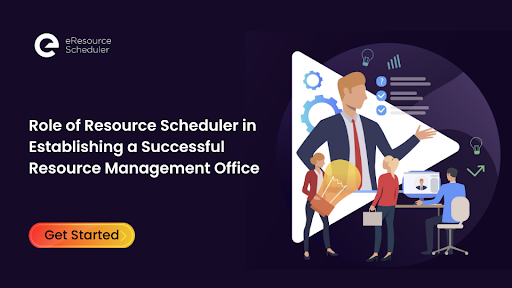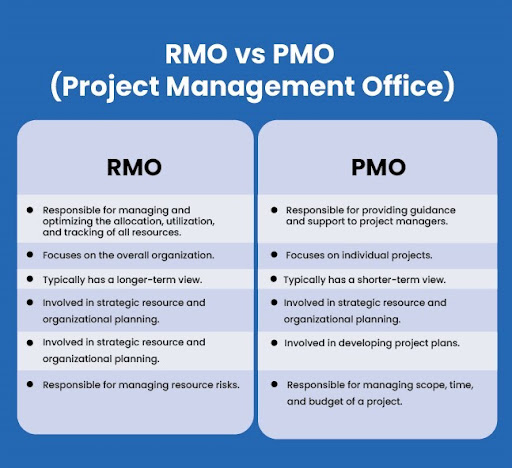
The ability to manage your resources directly impacts your potential to deliver projects on-time and within budget. Many companies therefore establish a resource management office (RMO) to help them plan, track, and manage their resource needs.
To get maximum returns from your RMO, it’s best to equip them with the right technology and tools so they can be successful in their roles. A resource management software delivers everything that an RMO team needs.
Learn how a RMO team can benefit your business and how a resource allocation tool will multiply their impact and functionality.
The Resource Management Office (RMO) is a team or department within an organization that is responsible for managing and optimizing the allocation, utilization, and tracking of all resources. This includes both physical resources, such as equipment and facilities, and human resources, such as employees and contractors.
The RMO team often works alongside the project managers to ensure projects are on-track.
The RMO plays a vital role in ensuring that organizations are able to achieve their goals by effectively managing their resources. Some of the specific responsibilities of the RMO include:
The RMO can be a valuable asset to any organization that is looking to improve its resource management capabilities. By effectively managing its resources, an organization can improve its chances of achieving its goals, reduce costs, and improve efficiency.
Here are some of the benefits of having an RMO:
The Resource Management Office (RMO) and the Project Management Office (PMO) are two different departments within an organization that have different roles and responsibilities.
The RMO is responsible for managing and optimizing the allocation, utilization, and tracking of all resources. This in3cludes both physical resources, such as equipment and facilities, and human resources, such as employees and contractors. The RMO helps to ensure that resources are used in the most efficient way possible, which can lead to cost savings and increased project success.
The PMO is responsible for providing guidance and support to project managers. This includes helping project managers to identify and assess resource needs, develop resource plans, and track resource utilization. The PMO also helps to ensure that projects are completed on time and within budget.
Here is a table that summarizes the key differences between the RMO and the PMO:

In some companies, the RMO and the PMO may be combined into a single department. However, in most places, the two departments have different roles and responsibilities.
The RMO and the PMO can work together to improve the efficiency and effectiveness of resource management in an organization. The RMO can provide the PMO with data and insights on resource utilization, which can help the PMO to make better decisions about resource allocation.
Role of Resource Scheduler in RMO
A resource management tool can be a valuable asset to the RMO. Here are some of the benefits of using a resource management tool:
A resource scheduler will automate a lot of the tasks that the RMO depends on. It will therefore enhance the RMO’s efficiency, effectiveness, and decision-making.
If you are considering investing in a resource management tool for your RMO department, there are a few things you should keep in mind:
A Resource Management Office (RMO) is the cornerstone of any successful organization. They turn the and scheduling headache into order while making it easier for the organization to adapt to changing market conditions. By using a resource allocation tool, you are setting your RMO team up for success.
However, it has to be the right tool for your business’s goals and needs. Streamline your RMO and create a culture of success by booking a demo with eRS. Our 14-day free trial will allow you to experience how much more efficient and faster it is to plan, optimize, and track your resources.
Plan Smarter. Schedule Faster.
Join thousands already using eResource Scheduler to align teams, time, and tasks seamlessly.